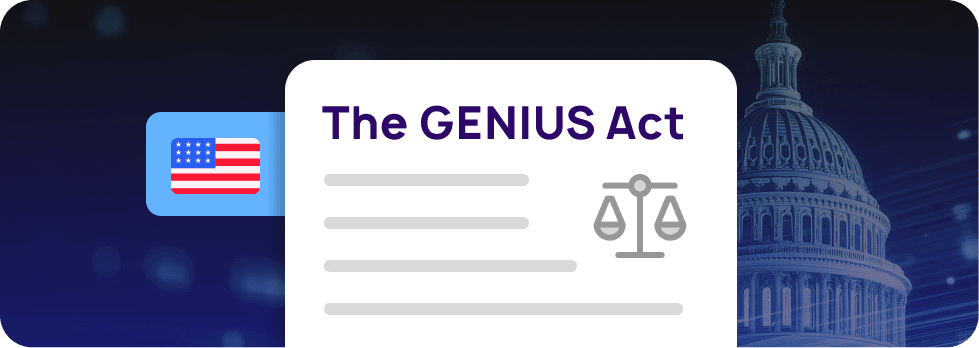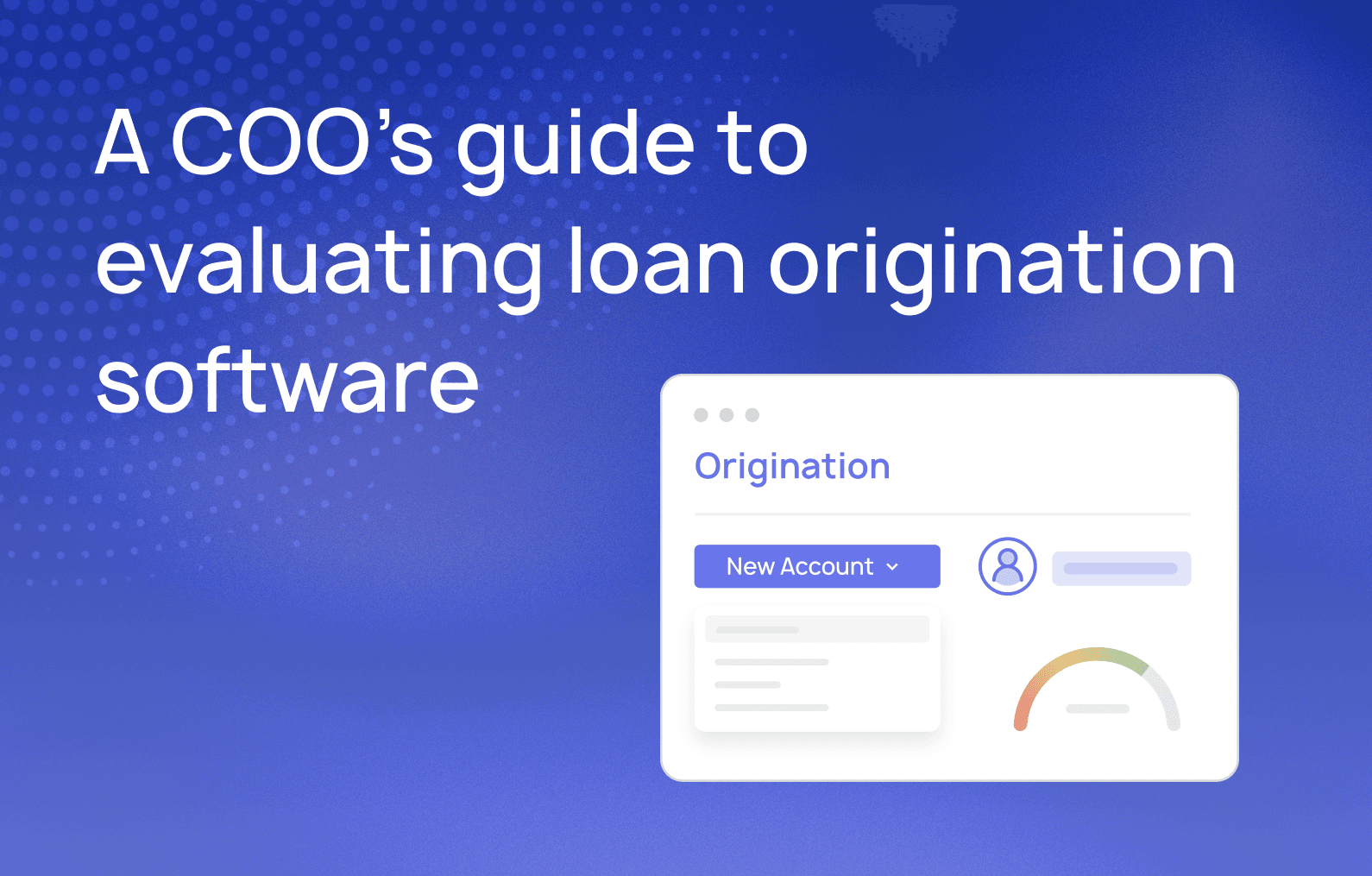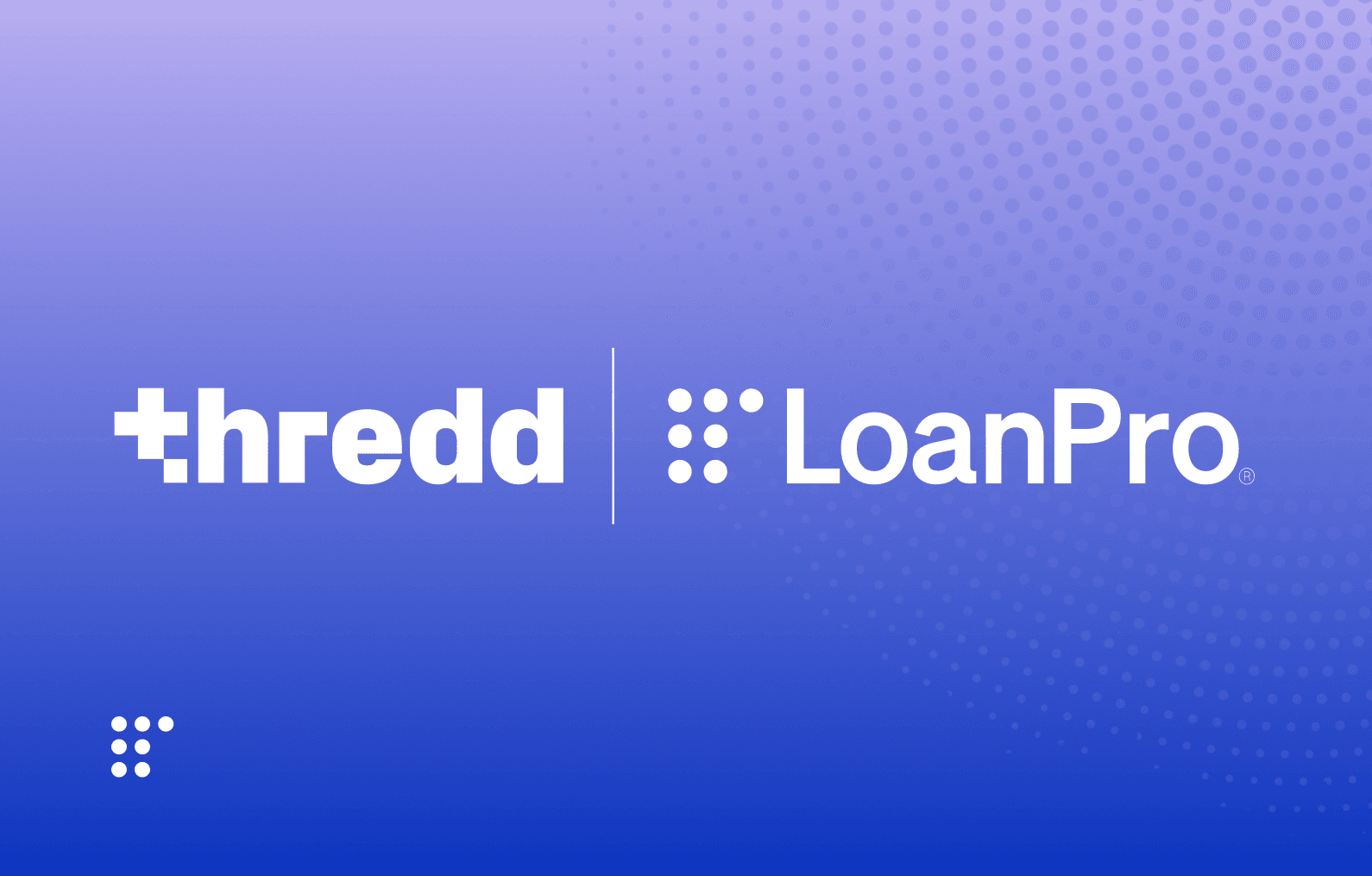What are stablecoins, and how will they change the future of banking and lending?
More than a decade ago, stablecoins may have been a novelty for those with additional cash to invest into untested, new forms of digital currencies. Today, the U.S. stablecoin market has grown to $225 billion according to J.P. Morgan Global Research. Research also suggests stablecoins could grow to $2 trillion by the end of 2028.
As this form of cryptocurrency continues to rapidly grow, it has the potential to fundamentally change the future of banking and lending.
In this post, we’ll explore:
Stablecoins 101: Understanding the mechanics of tokenized cash
- What are stablecoins?
- The critical difference: Fiat-backed vs. algorithmic reserves
How will stablecoins change the traditional lending model?
- Disintermediation and the future of balance sheet lending
Stablecoin lending: Navigating the regulatory and compliance unknowns
- Understanding the future of stablecoin regulation
- Making sense of a complex compliance environment
Preparing for the next-gen digital asset lending ecosystem: A technological imperative
- Configurability over code: Why system flexibility is non-negotiable for adaptation
The strategic roadmap for banks and lenders entering the tokenized credit market
Stablecoins 101: Understanding the mechanics of tokenized cash
What are stablecoins?
Stablecoins are a type of cryptocurrency designed to offer a more stable value by tying them to a certain asset. This is unlike other forms of cryptocurrency like Bitcoin or Ethereum that rely on consensus mechanisms to manage blockchains. Instead, stablecoins reduce volatility by pegging their value to fiat currencies, commodities, or other financial instruments.
While the volatility of other cryptocurrencies is appealing to traders who can make big money, it’s typically too risky for everyday transactions. Stablecoins creates a more stable (hence the name) digital currency that can be used to move money. There are four primary types of stablecoins:
- Fiat-backed stablecoins: These hold reserves of currencies to secure their value. Independent custodians maintain these reserves, which are regularly audited.
- Commodity-backed stablecoins: These are another type of fiat stablecoin that links to commodities like gold instead of currency. They typically hold these commodities through third-party custodians or related investments.
- Crypto-collateralized stablecoins: These are backed by other cryptocurrencies. But, because that cryptocurrency is more volatile, these types of stablecoins generally need reserves that far exceed the value of the stablecoins issued to protect against that volatility.
- Algorithmic stablecoins: Similar to central banks, such as the U.S. Federal Reserve, which don’t rely on a reserve asset to keep the currency they issue stable, these stablecoins are managed by controlling their supply through an algorithm.
The critical difference: Fiat-backed vs. algorithmic reserves
As the name implies, stablecoins are designed to maintain a stable price. Fiat-backed stablecoins do this by ensuring they are backed by collateral — real dollars held in reserve. Some fiat-backed stablecoins are fully backed dollar for dollar while some may be undercollateralized based on market value.
Regardless, because fiat-backed stablecoins are backed by actual money, their value tends to be the most stable, sticking closely to the value of the currency they represent. And, this makes them easier to use since they function most closely to real money.
On the other side, algorithmic stablecoins use code to maintain their value without holding any fiat currency to back it up. On the plus side, they don’t rely on a central authority like fiat-backed stablecoins, creating a decentralized form of currency. Decentralized finance (DeFI) is appealing for some because it is more accessible, puts more control in the hands of the user, can enable cheaper, more efficient transactions, and may offer increased transparency. However, it also creates greater risk and is more volatile than fiat-backed stablecoins.
How will stablecoins change the traditional lending model?
Stablecoins and other digital assets are now being tested as loan collateral or payment instruments — a sign of how embedded AI and blockchain rails may converge in future credit ecosystems.
While these are still early days, stablecoins combined with onchain lending (i.e., a DeFi system where loans are originated, collateralized, and repaid entirely through smart contracts on a blockchain) have the potential to create new ways to lend and borrow with automated execution, near-instantaneous settlement, and borderless capital flows — essentially creating a global credit market that never closes, according to Visa.
Visa’s latest report shows stablecoin-denominated loans totaled $670 billion over the last five years, and $51.7 billion in the month of August alone, reported PYMNTS.
With stablecoins as the infrastructure behind decentralized finance lending, traditional lending models are replaced with more efficient, cross-border tokenized lending models. Stablecoin-powered lending will also play a role in the growing Buy Now, Pay Later ecosystem.
Want to hear more about the evolution of digital assets in lending? Tune into this Lenders on Lenders podcast episode with Mike Taormina, co-founder and CEO of Vault.
Disintermediation and the future of balance sheet lending
The rise of stablecoins and onchain lending has accelerated a shift from banks to private debt providers in the lending space. The Chicago Federal Reserve wrote about the impact of banking disintermediation more than 30 years ago — stating that “Historically, bank disintermediation has occurred whenever bank borrowers or savers could get a better deal from nonbank alternatives.” Digital assets in lending makes this possible by offering cheaper, faster, and more accessible means to get a loan.
That said, while many traditional banks and lenders may worry that onchain lending will replace them in the financial ecosystem, the reality is banks will continue to play a central role.
Smart banks and credit unions are evolving their lending strategies to tap into revenue opportunities that don’t rely on traditional balance sheet lending. Examples include developing lending models where they originate loans but then sell them to third parties or premium fee-based services like wealth management.
The future of lending will likely be a hybrid model where banks adapt business models alongside non-bank lenders and alternative funding sources.
Stablecoin lending: Navigating the regulatory and compliance unknowns

Understanding the future of stablecoin regulation
While many use cases for stablecoins remain in early stages, regulatory changes could accelerate the adoption of stablecoin across the U.S. financial ecosystem. In July 2025, the GENIUS Act (Guiding and Establishing National Innovation for U.S. Stablecoins Act) was passed into federal law to create a regulatory framework for stablecoins.
According to the White House, the GENIUS Act aims to protect consumers in a digital market by creating the first-ever federal regulatory system for stablecoins. It calls for:
- Fully backed reserves like U.S. dollars or short-term Treasuries — and requires issuers to make monthly, public disclosures of the composition of reserves.
- Strict marketing rules to protect consumers from deceptive practices by stablecoin issuers. For example, they are prohibited from misleading consumers into thinking their stablecoins are backed by the U.S. government, federally insured, or legal tender.
- Alignment of state and federal stablecoin frameworks to ensure “fair and consistent regulation throughout the country.”
- Obligates stablecoin issuers to establish effective anti-money laundering and sanctions compliance programs with risk assessments, sanctions list verification, and customer identification under the Bank Secrecy Act.
Making sense of a complex compliance environment
In addition, regulatory compliance in a decentralized finance world is much more difficult.
Cryptocurrencies in general are higher risk. Cross-border payments are higher risk. Beyond compliance with the Bank Secrecy Act, stablecoin issuers will need to comply with the anti-money laundering regulations (KYC/AML) in any market where they operate.
The U.S. Department of Treasury is now working on additional rulemaking to implement the GENIUS Act to “encourage innovation in payment stablecoins while also providing an appropriately tailored regime to protect consumers, mitigate potential illicit finance risks, and address financial stability risks.”
The comment period on this Advanced Notice of Proposed Rulemaking (ANPR) closed on November 4, 2025, with nearly 500 comments submitted by financial institutions, associations, and fintechs. Anyone with a stake in the game for the future of lending should pay attention to the proposed rule that comes out of this process.
While the passing of the GENIUS Act is a significant step forward, regulatory uncertainty remains as we await next steps on implementing this important stablecoin regulation. Any stablecoin issuer should prioritize a modern, configurable platform for lending processes that can help them adapt to changing compliance requirements and regulatory frameworks.
Preparing for the next-gen digital asset lending ecosystem: A technological imperative
As you prepare for the evolution of digital assets in lending, start by evaluating your current fintech infrastructure and DeFi lending protocols to ensure you’re building a model that can stand the test of time.
Look for configurable, API-first platforms that can enable you to adapt to changing requirements, particularly as stablecoin regulations continue to evolve, and integrate seamlessly with your other business applications.
In a rapidly evolving stablecoin environment, you need a modern credit platform that can be adapted and scaled over time to fit your changing needs. The key word is flexibility.
Configurability over code: Why system flexibility is non-negotiable for adaptation
System flexibility is critical to be able to compete in a next-generation digital asset lending ecosystem. That’s why LoanPro focuses on configurability over customized code so that you can easily and quickly adapt new products and programs without code rewrites that can be time and resource intensive.
A configurable, API-based end-to-end lending platform ensures you can:
- Rapidly design, launch, and service new programs
- Easily integrate with third-party tools and partners
- Stay on top of current and new compliance requirements
- Support any class of credit program, from B2B loans to consumer cards to stablecoin loans
- Tap into new growth opportunities and increase efficiencies
The strategic roadmap for banks and lenders entering the tokenized credit market
As with any strategic roadmap, it’s important to start with a few core steps on this journey to stablecoin in lending:
- Build your use cases: Before diving into the deep end, it’s important to make sure you’re swimming in the right direction. What stablecoin lending use cases make sense for your business? Where do the opportunities lie?
- Ensure a strong compliance framework: Make sure you understand the current regulatory landscape and upcoming compliance requirements so that you can ensure compliance is built into the solution instead of an afterthought.
- Evaluate your technology stack: Look for a modern credit platform that provides you with the needed flexibility to react to market shifts and business priorities.
- Start small and scale: Launch a pilot stablecoin lending program first to evaluate and refine your solutions before scaling up offerings.
As Simon Taylor says, “any financial product you could build on traditional rails can now be built on stablecoins and with onchain finance. But more importantly, the instant, programmable nature of stablecoins lets you build new products and experiences with new economics. . . The whole world of being a non-bank lender is about to get 100x more efficient.”
So, if you aren’t yet thinking about your stablecoin lending strategy, now is the time. Stablecoins can help both banks and non-banks alike to build new lending products — with more speed and efficiency than ever before.



